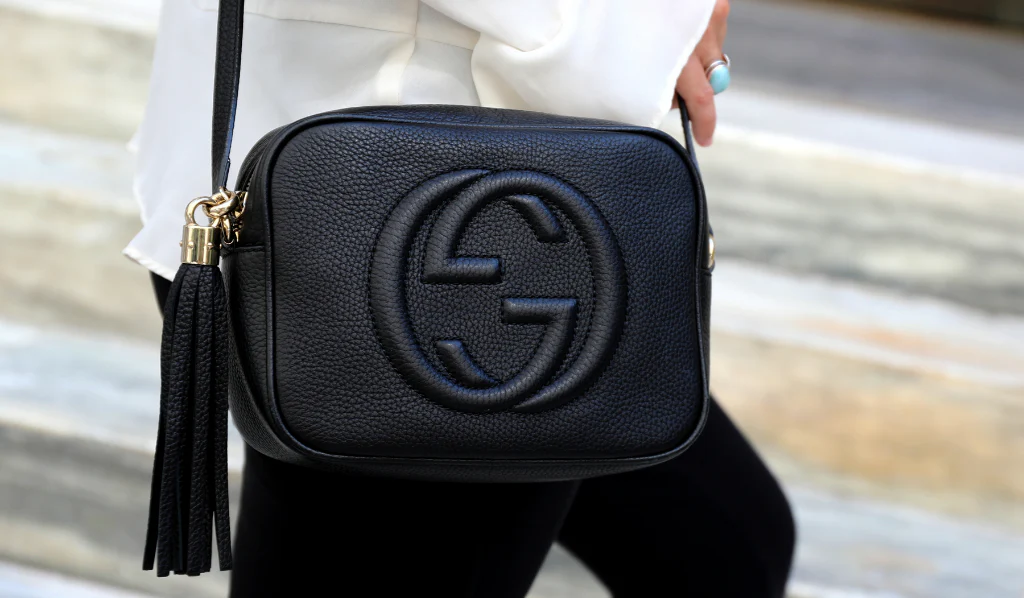Brand loyalty is a powerful force in the world of consumerism. Imagine walking into a store, and without hesitation, you reach for that familiar product you know and love—whether it’s your favorite snack or those iconic Gucci bags that have become synonymous with luxury. This unwavering commitment to a brand goes beyond simple preference; it’s an emotional connection that drives consumers to choose one company over another time and again.
But what fuels this bond? What makes someone not only purchase from a brand but advocate for it among friends? Understanding the psychology behind brand loyalty can unlock valuable insights for businesses looking to create lasting relationships with their customers. Let’s delve deep into this captivating topic and explore what really keeps consumers coming back.
Definition of Brand Loyalty
Brand loyalty refers to a consumer’s unwavering commitment to repurchase or continue using a brand. It’s more than just preference; it’s an emotional bond that often transcends rational decision-making.
When customers choose one brand consistently over others, they showcase their trust and attachment. This loyalty is built through positive experiences that resonate with their values and expectations.
It manifests in various ways—repeat purchases, recommendations to friends, and even defending the brand against criticism. Customers become advocates for brands they love, turning them into communities of loyal followers.
Understanding this concept is crucial for businesses aiming to foster long-term relationships with consumers. Brand loyalty not only drives revenue but also creates a sense of belonging among its patrons.
The Importance of Brand Loyalty for Businesses
Brand loyalty is a crucial asset for businesses in today’s competitive landscape. When consumers trust a brand, they are more likely to make repeat purchases. This translates directly into increased revenue.
Loyal customers often act as brand ambassadors. They share their positive experiences with friends and family, effectively becoming walking advertisements without any cost to the business.
Additionally, acquiring new customers can be five times more expensive than retaining existing ones. Investing in brand loyalty ensures lower marketing costs over time while maintaining steady sales figures.
Furthermore, loyal customers tend to spend more per transaction compared to first-time buyers. Their willingness to invest in your products or services stems from established trust and satisfaction levels.
In an era where options abound, fostering strong brand loyalty can set a company apart from its competitors. It transforms casual shoppers into lifelong supporters who choose your offerings time and again.
Factors That Influence Brand Loyalty
Brand loyalty is shaped by a variety of factors that work together to create lasting consumer connections.
First, emotional connection plays a crucial role. When consumers feel personally attached to a brand, they are more likely to return for repeat purchases.
Next, the quality and consistency of products or services cannot be overlooked. Consumers expect reliability; meeting those expectations builds trust over time.
Customer service also influences brand loyalty significantly. Positive interactions can turn casual buyers into devoted fans.
Additionally, rewards and incentives enhance the experience for loyal customers. Programs that offer discounts or exclusive access encourage continued engagement with the brand.
Social proof matters too—recommendations from friends or influencers can sway decisions in favor of brands known for their strong reputations. Each factor intertwines seamlessly to foster an environment where loyalty thrives among consumers.
Emotional Connection with the Brand
Emotional connection is the heartbeat of brand loyalty. When consumers feel something deeper, they’re more likely to stick around. It’s not just about products; it’s about values and experiences.
Take a moment to think about brands that resonate with you personally. They evoke memories, inspire feelings, or align with your beliefs. This emotional tie can make someone choose a specific product over others without even thinking twice.
Brands like Apple or Nike create narratives that speak directly to their audiences’ aspirations and identities. These stories foster a sense of belonging and community among loyal customers.
When brands tap into emotions, they cultivate trust and relatability. Customers are drawn in by storytelling that mirrors their own lives or challenges—therein lies the power of emotional connection in building unwavering brand loyalty.
Quality and Consistency of Products/Services
Quality and consistency are cornerstones of brand loyalty. Consumers expect the best when they invest in a product or service. When brands deliver on these promises, trust builds naturally.
Think about luxury items like Gucci bags. Shoppers don’t just buy a handbag; they purchase an experience tied to quality craftsmanship and reliable standards. Each bag exemplifies what the brand stands for—luxury, style, and durability.
Consistency breeds familiarity, making customers feel secure in their choices. They know that whether it’s the latest collection or a classic piece, each item maintains high standards.
This reliability encourages repeat purchases. Customers return not just for products but for assurance that their expectations will always be met. Brands that prioritize quality create lasting relationships with consumers who value excellence over fleeting trends.
Customer Service and Support
Customer service is the backbone of brand loyalty. When consumers feel valued, they are more likely to return.
A friendly voice on the other end of a call can turn a negative experience into a positive one. Quick responses and effective solutions build trust.
Support goes beyond answering queries; it’s about creating memorable interactions. Personalized experiences make customers feel special.
Brands that invest in training their staff often see higher loyalty rates. Knowledgeable representatives instill confidence in products or services.
Another key aspect is availability. Offering multiple channels for support—like chat, email, or social media—makes it easier for customers to reach out when needed.
Incorporating feedback also plays a critical role in retaining loyal customers. Listening to concerns not only meets expectations but shows that the brand cares about improvement and customer satisfaction.
Rewards and Incentives for Loyal Customers
Rewards and incentives are powerful tools for fostering brand loyalty. They create a sense of belonging among customers, making them feel valued.
Consider how brands like Starbucks have transformed coffee runs into rewarding experiences. Their rewards program offers free drinks and exclusive deals that keep customers engaged.
Incentives can also take the form of special promotions or early access to new products. This not only enhances customer satisfaction but encourages repeat business.
Personalization plays a crucial role too. Tailoring rewards based on purchase history makes each customer feel unique and appreciated.
Engaging loyal customers through contests or referral bonuses further cements their connection with the brand. These strategies turn casual buyers into passionate advocates who spread positive word-of-mouth.
Effective rewards programs make consumers more likely to choose your brand over competitors time after time. It’s all about creating memorable experiences that resonate deeply with your audience.
How to Build Strong Brand Loyalty
Building strong brand loyalty starts with understanding your audience. Know their needs, preferences, and pain points. This knowledge allows you to create tailored experiences that resonate deeply.
Consistency is key. Whether it’s product quality or messaging, maintaining a steady standard helps foster trust over time. When customers know what to expect, they feel more secure in their choices.
Engagement plays a crucial role too. Utilize social media platforms for authentic interactions. Respond promptly to inquiries and feedback; this shows you value their opinions.
Consider implementing a rewards program that recognizes repeat customers. Incentives can encourage ongoing purchases while making them feel appreciated.
Tell your brand’s story effectively. Share values and missions that align with your audience’s beliefs—this emotional connection keeps them coming back for more unique experiences and products like guccibags or other cherished items within your brand portfolio.
Case Studies of Successful Brands with High Levels of Loyalty
When examining brand loyalty, several case studies stand out as prime examples of how effective strategies can create fervent followings. One notable example is Apple, which has cultivated a dedicated customer base through innovative products and a focus on design aesthetics. Consumers don’t just buy an iPhone; they join the Apple community. This emotional connection drives repeat purchases and word-of-mouth marketing.
Another compelling case is Nike. Its “Just Do It” campaign resonates deeply with customers who see the brand as a lifestyle choice rather than merely athletic wear. By aligning itself with social causes and leveraging high-profile endorsements, Nike fosters loyalty that transcends product offerings.
Then there’s Starbucks, known for creating not just coffee but an experience. The ambiance of its stores encourages customers to return time after time. Their rewards program also incentivizes frequency, making consumers feel valued for their continued patronage.
Luxury brands like Gucci have mastered exclusivity while maintaining broad appeal through clever marketing tactics and collaborations that keep the brand fresh in consumers’ minds without compromising its identity or allure.
These examples illustrate various paths to achieving strong brand loyalty—from emotional connections to consistent quality and strategic incentives—showing what it takes for businesses to cultivate lasting relationships with their customers. As companies strive for growth in competitive markets, understanding these principles becomes essential in building enduring consumer trust and commitment toward their brands.



